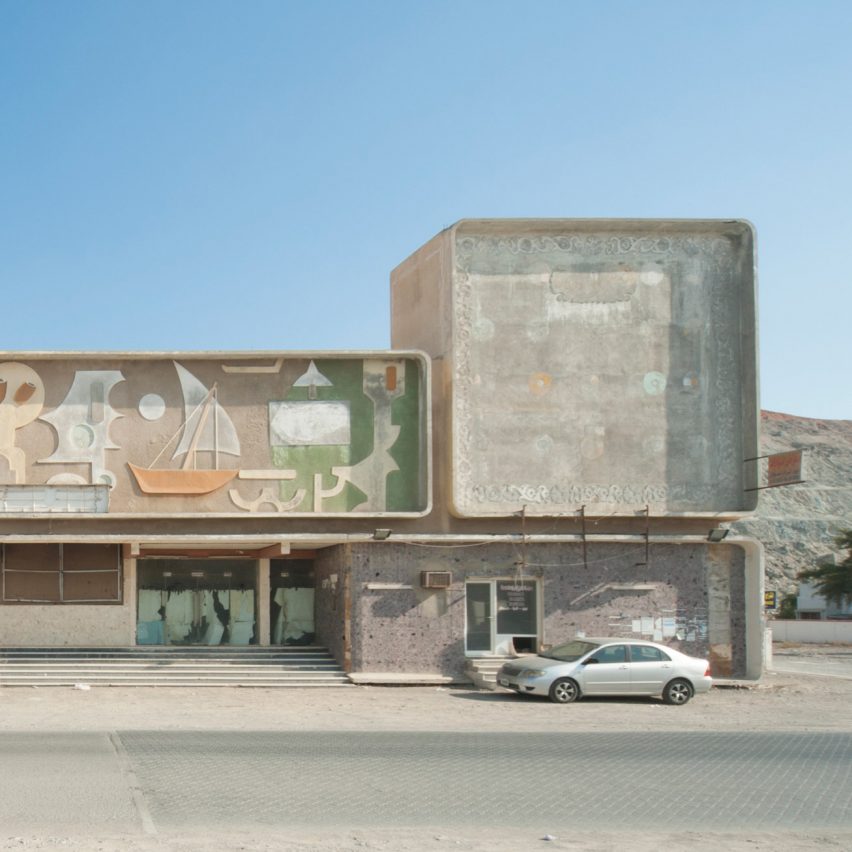
The Sharjah Architecture Triennial is located in two prominent examples of the emirate’s surviving 1970s and ’80s architecture. Here are six prominent buildings from the era that are being conserved.
The two main venues of the inaugural Sharjah Architecture Triennial are a former school that was built in the mid 1970s and a former fruit market that was built in the early 1980s.
Both buildings are examples of the architecture that was created in the emirate in the years after gaining its independence in 1971. They have been purchased by the foundation organising the triennial as part of a campaign to conserve the emirate’s 1970s and ’80s architecture, which is increasingly under threat of demolition.
“The foundation wants to keep all the layers in the city – including the 1970s and ’80s,” said Mona El Mousfy, who is the architecture consultant for the triennial and partner organisation the Sharjah Art Foundation, which has also been purchasing buildings from the era.
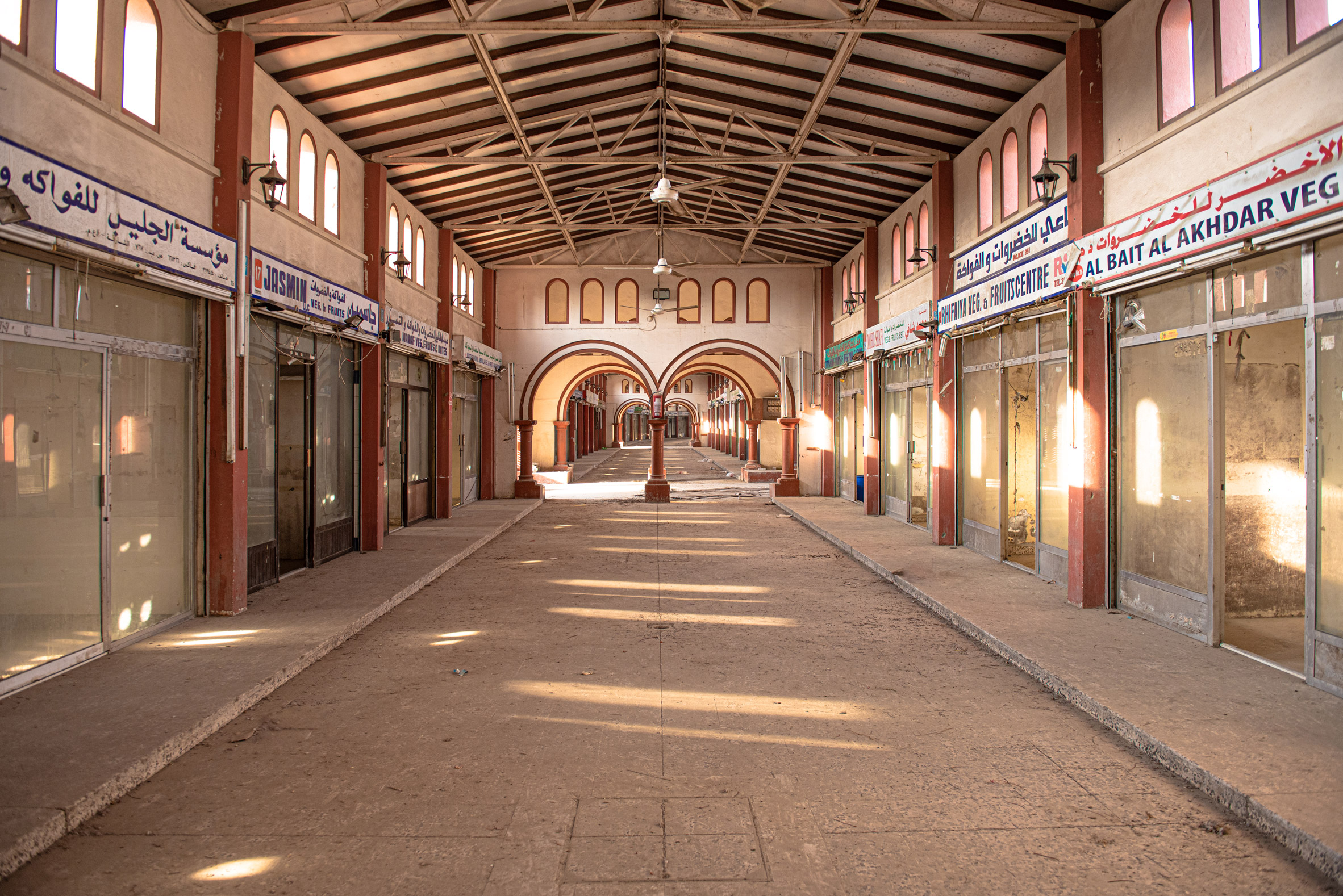
According to El Mousfy, the 1970s and ’80s architecture in the emirate is often not considered to have architectural merit, which means many buildings from this period have been lost.
“The aim is to keep some layers of the history that were ignored,” she told Dezeen. “Prior to the invention of the foundation the only buildings that were worthy of keeping was the historical heritage [from the 19th century].”
El Mousfy believes that the 1970s and 1980s buildings do not fit with how Sharjah may want to portray itself, but the low-key architecture can still be a valuable assert for the emirate.
“It doesn’t represent wealth, it’s too modest,” explained El Mousfy.
“But the buildings have an architectural character, they are responsive to the climate and to the city. Like the school – it may not be spectacular, but when you are siting in the school the air blows through. It has really adapted well to students, so it could well be adapted to another use.”
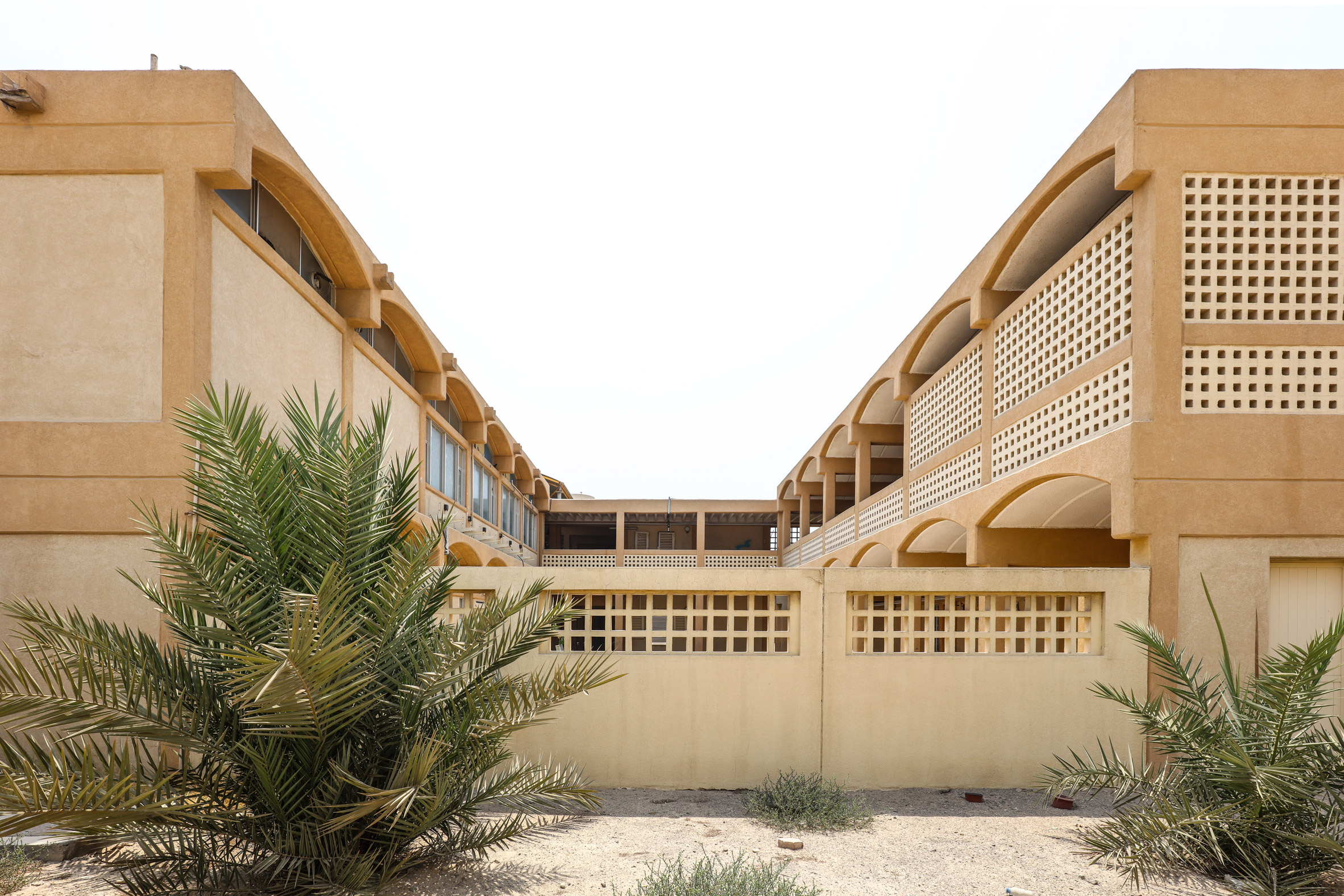
Alongside campaigning to retain modern buildings in the city of Sharjah and across the emirate, the organisations have also been purchasing buildings. The triennial is renovating the fruit market to host installations and the Al-Qasimiyah School will become the triennial’s permanent home – hosting year-round events.
The Sharjah Art Foundation has purchased numerous buildings across the emirate, including Sharjah’s concrete flying-saucer restaurant, an ice factory and a cinema.
However, much of Sharjah’s 1970s architecture is still under threat. A large central area of the city, which contains many buildings from the period, is set to be levelled as part of the Heart of Sharjah masterplan. This includes a series of blocks on Bank Street designed in 1977 by Spanish architects Tecnica y Proyectos.
Sharjah Art Foundation is campaigning to save this area and El Mousfy believes that the growing interest in architecture from this period means there made be a chance to save these buildings.
“There is now an interest,” she said. “The foundation is trying to resist it [the demolition] but some buildings have already been demolished.”
“It would be good to save it as an urban fragment, she continued. “At least now it is not impossible.”
Read on for six 1970s and 1980s buildings that are being conserved by the foundation:
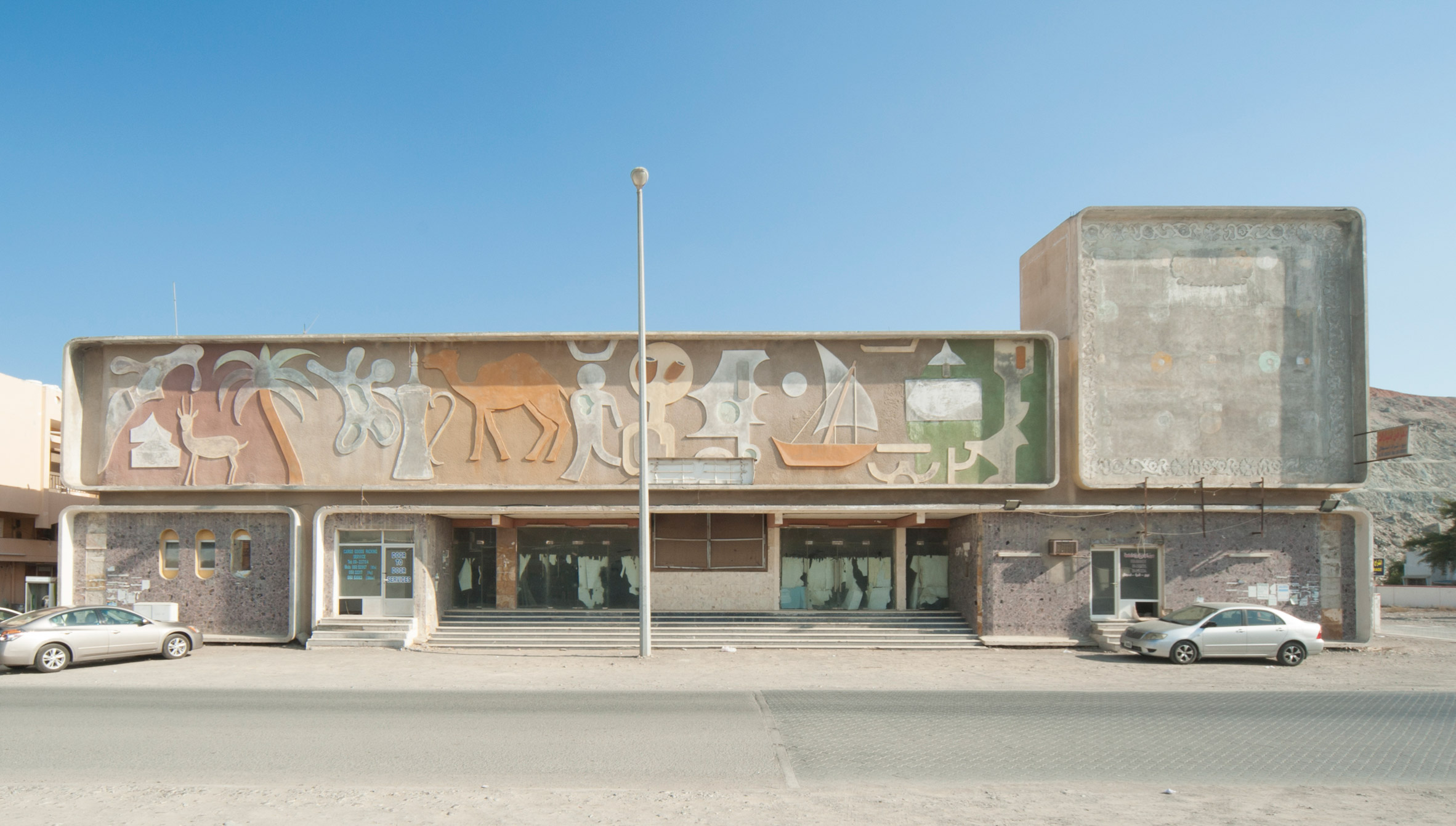
Khor Fakkan cinema, 1978, by unknown architect
Built in 1978 in the city of Khor Fakkan, the cinema was the first on the east coast of the UAE. The front of cinema has a distinctive low-relief frieze that features a camel, traditional dhow boat, gazelle and palm trees, while inside the auditorium had seats for 1,000, with men seated on the ground floor and women and children on the balconies.
The cinema closed in 2006. Sharjah Art Foundation swapped the building for a property in the city of Sharjah and intends to turn it into a film school with a working cinema.
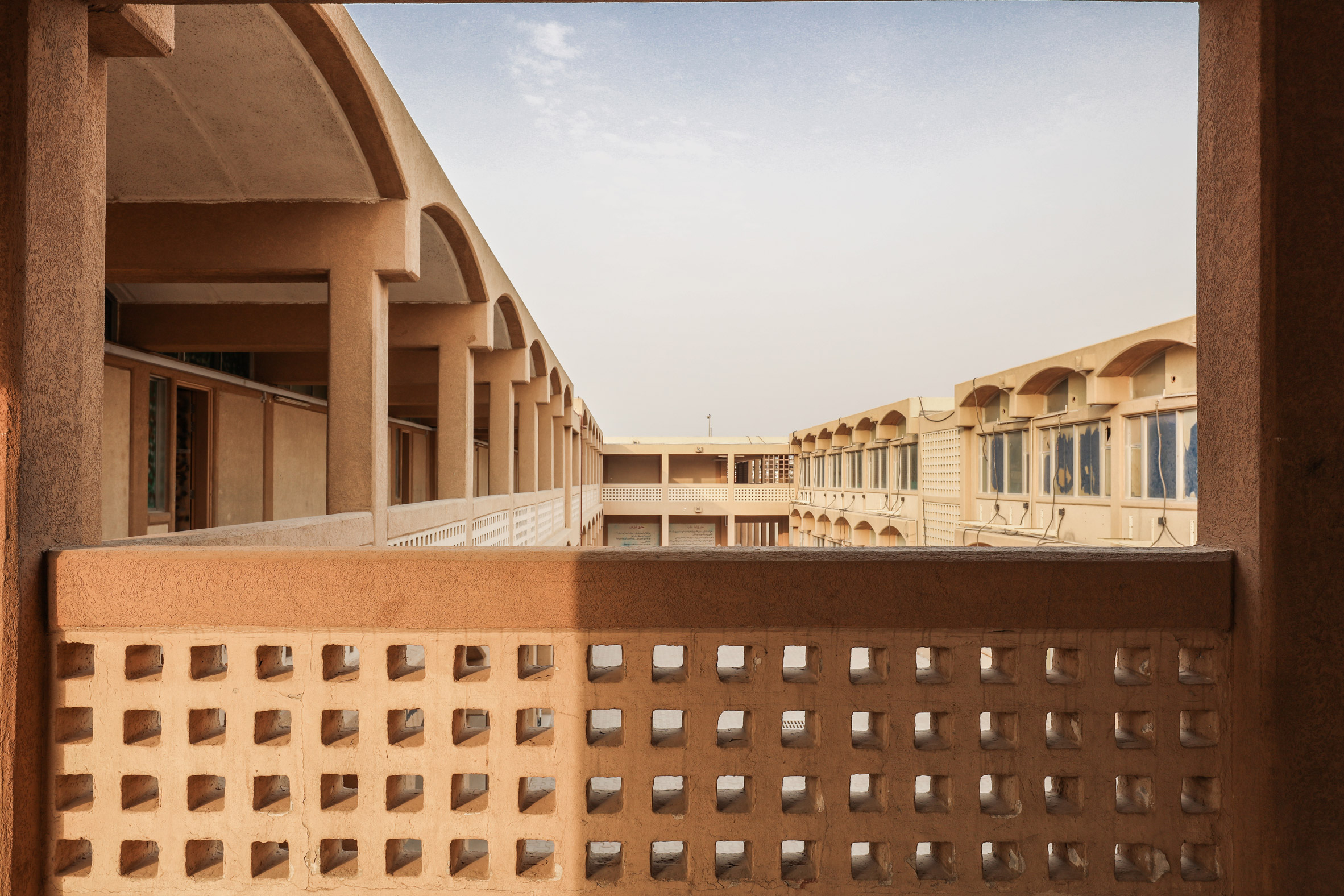
Al-Qasimiyah School, mid 1970s, by Khatib & Alami
Al-Qasimiyah School is one of many almost identical schools – there are more than 20 in Sharjah – built across the UAE that were based on a design created by architecture studio Khatib & Alami for the Ministry of Education. All of the orange-coloured schools have classrooms in repetitive, flat, vaulted bays arranged around covered courtyard spaces.
Following its closure, the school was purchased from the government by the Sharjah Architecture Triennial and renovated by El Mousfy. It is the main venue for the inaugural triennial and is its permanent headquarters.
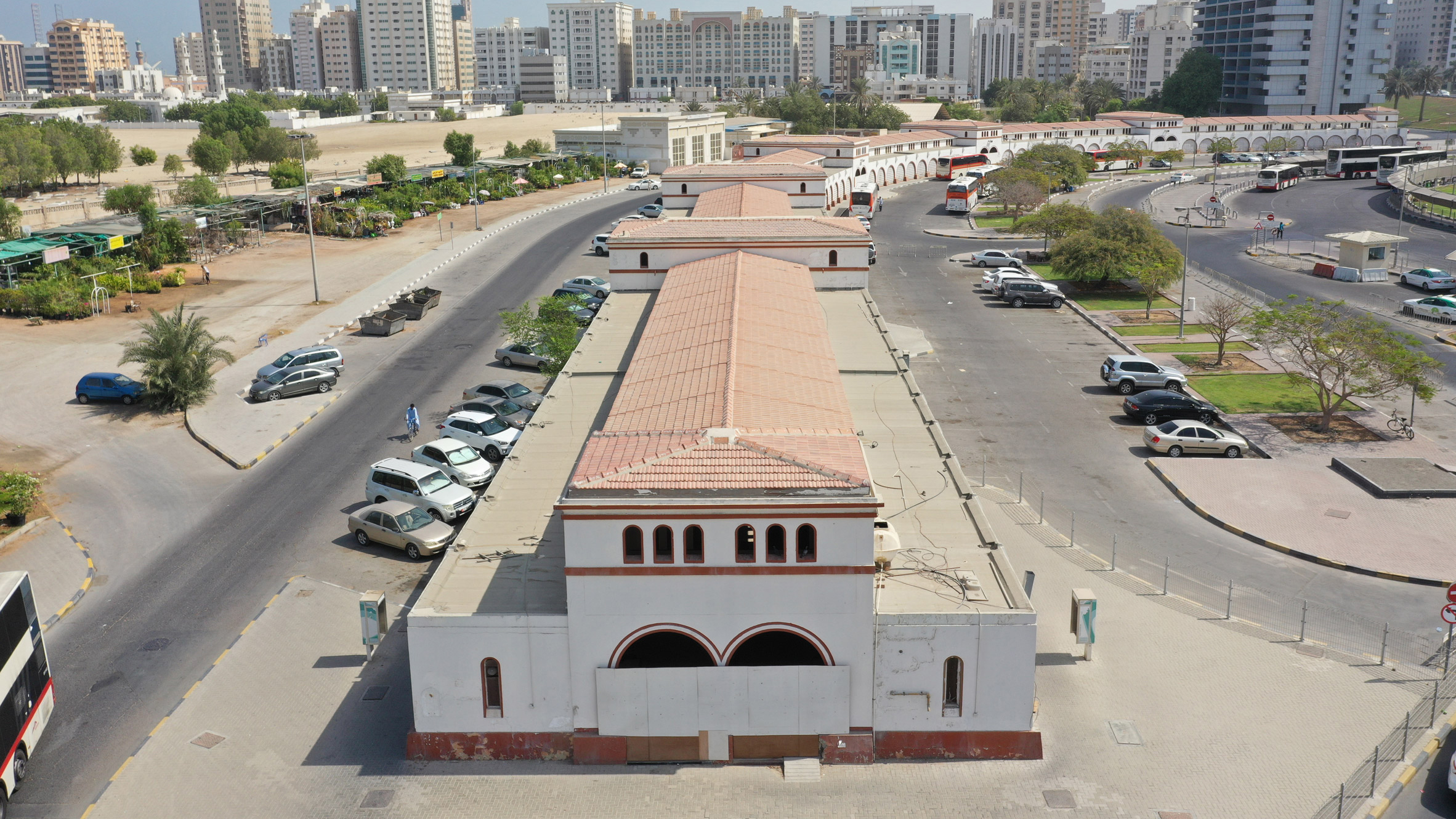
Al Jubail Vegetable Market, early 1980s, by Halcrow Group
The Al Jubail Vegetable Market is one of the main venues for the Sharjah Architecture Triennial.
Designed as part of the city’s Jubail Sou complex by British engineering firm the Halcrow Group, the market is fronted by a long curved arcade. Inside the building two rows of shops line either side of a central corridor.
The market was abandoned in 2015 when the new fish market opened, with Sharjah Architecture Triennial then taking over the building.
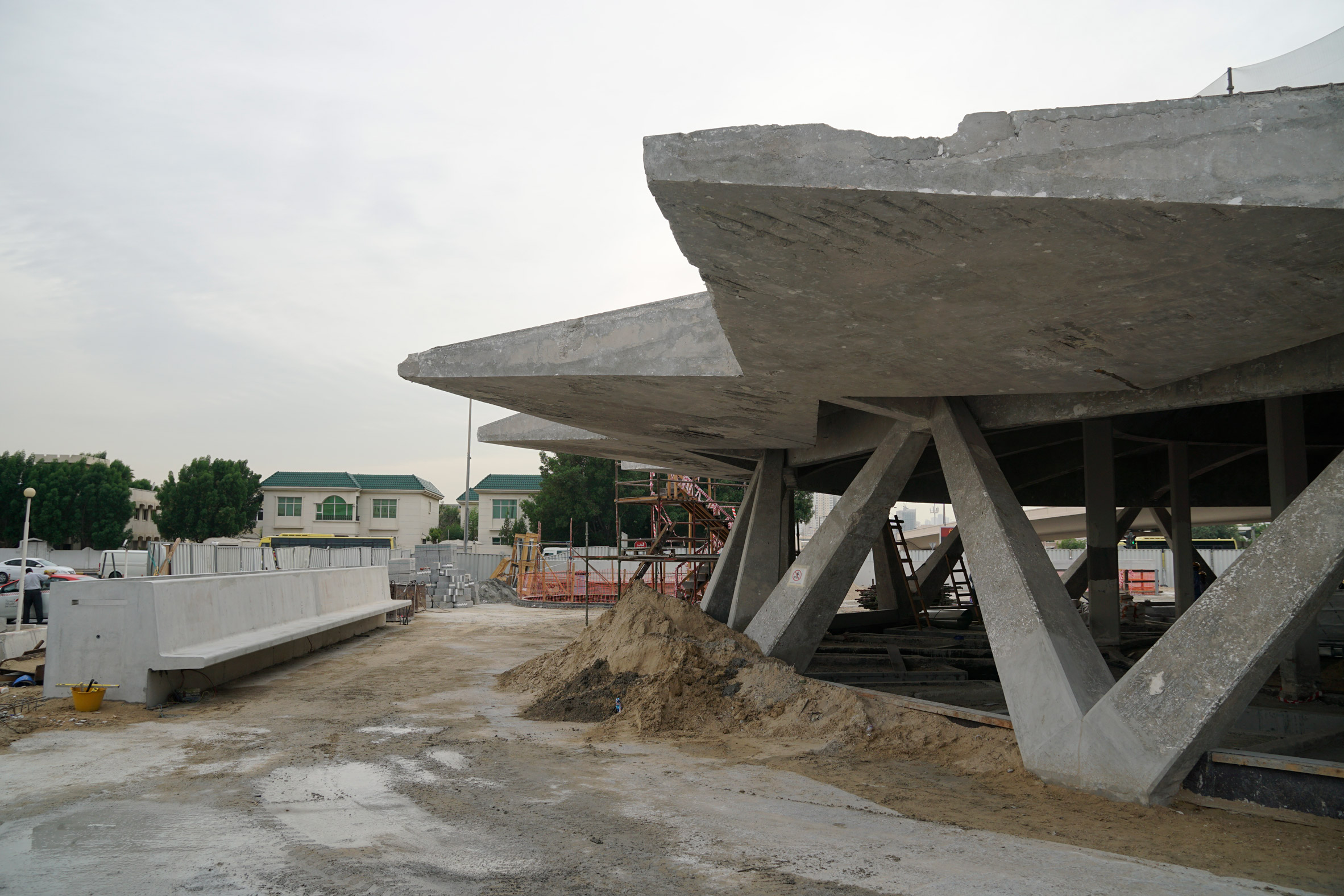
Flying saucer restaurant, 1978, by unknown architect
A local landmark since its construction in 1978, the flying saucer was built to house French chef Gérard Reymond’s first restaurant in the city. The restaurant was topped by a distinctive 32-pointed concrete dome, which was supported by triangulated, intersecting columns.
Following the closure of Reymond’s restaurant in 1980, the building became a grocery store and then a fast-food restaurant. The building was purchased by the Sharjah Art Foundation in 2012 and has been used to host installations since 2015. El Mousfy is currently leading the renovation of the flying saucer into a permanent arts venue.
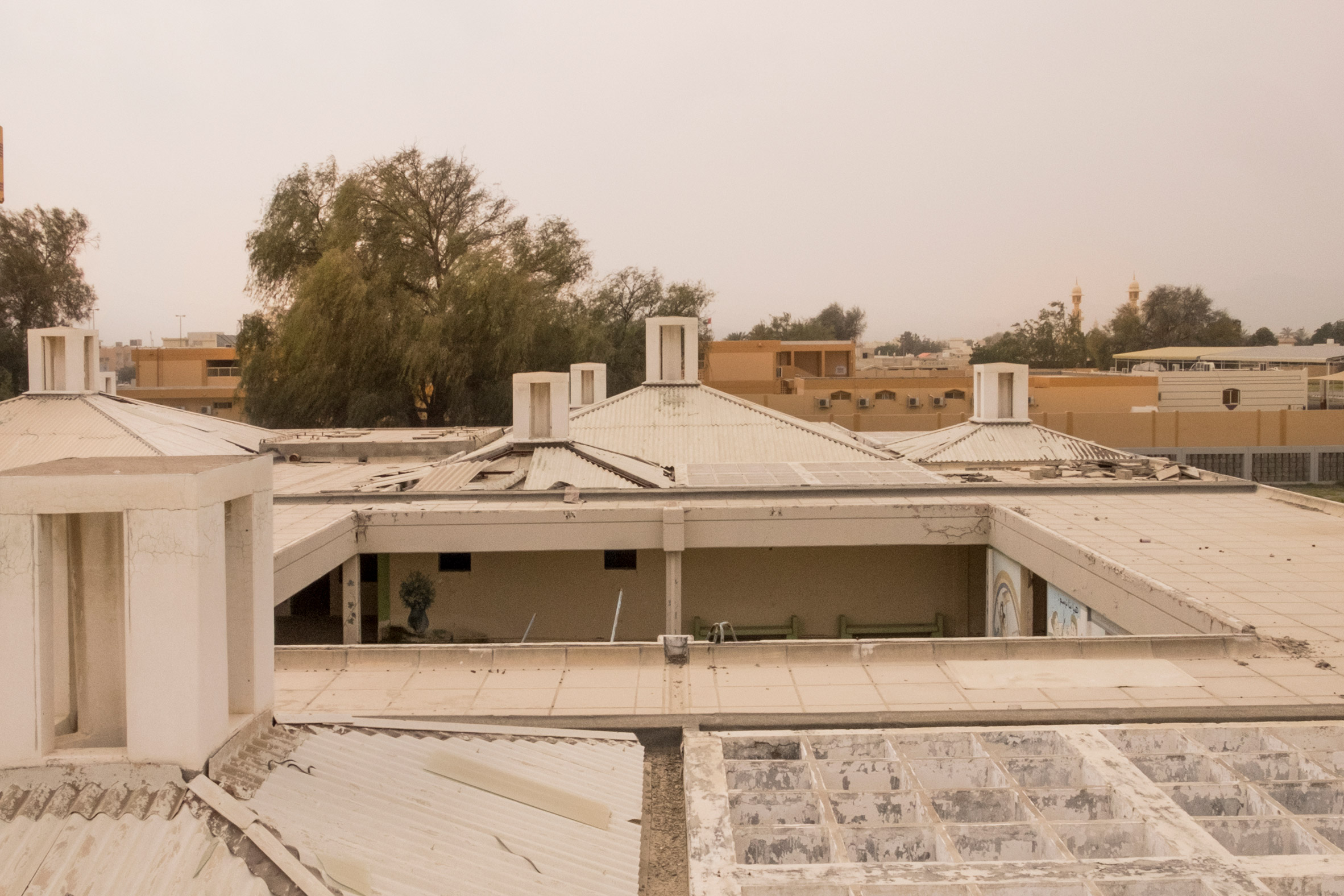
Kalba Kindergarten, 1979, by George Rais and Jaafar Tukan
This building is one of numerous kindergartens built across the emirate that are based on a 1974 prototype designed by Lebanese architect George Rais and Palestinian-Jordanian architect Jafar Tukan.
The kindergarten contains 12 classrooms, which each have a pyramidal roof topped with an integrated wind-tower. These classrooms are grouped in threes alongside a larger communal room, which are each topped with larger pyramidal roofs.
Sharjah Art Foundation has recently acquired the building and intends on turning it into a community centre.
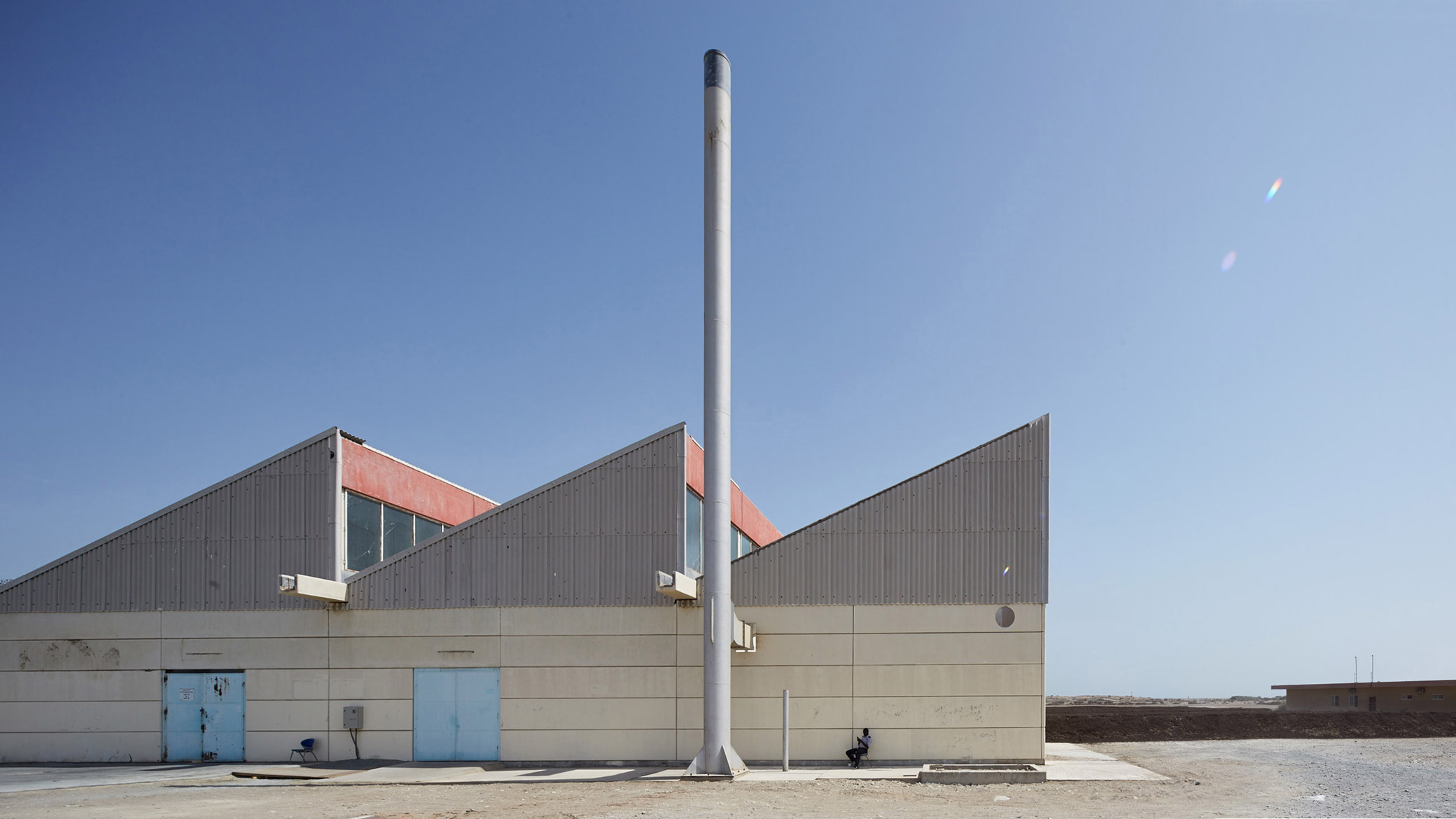
Kalba Kindergarten Ice Factory, 1970s, by unknown
Sharjah Art Foundation purchased the former ice-factory in the town of Kalba, on the eastern coast of the emirate, to host art installations.
Located near the creek and the Al Qurm mangrove swamp, the ice factory has a distinctive saw-tooth shaped roof made from corrugated metal and an open, concrete frame.
In 2015 the building was used as the site of a large installation by Argentinian artist Adrián Villar Rojas.
Photography is by Sharjah Art Foundation, unless stated.
The post Sharjah’s 1970s and ’80s architecture is being saved by the architecture triennial appeared first on Dezeen.
